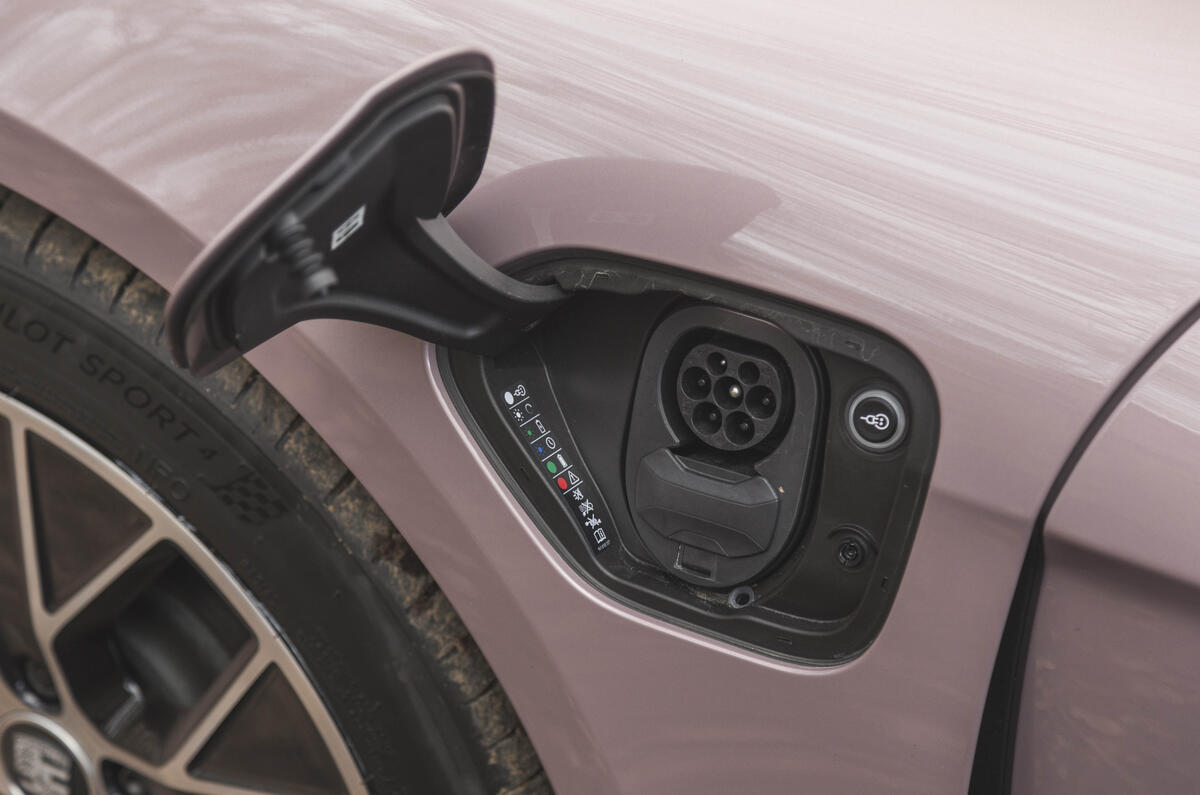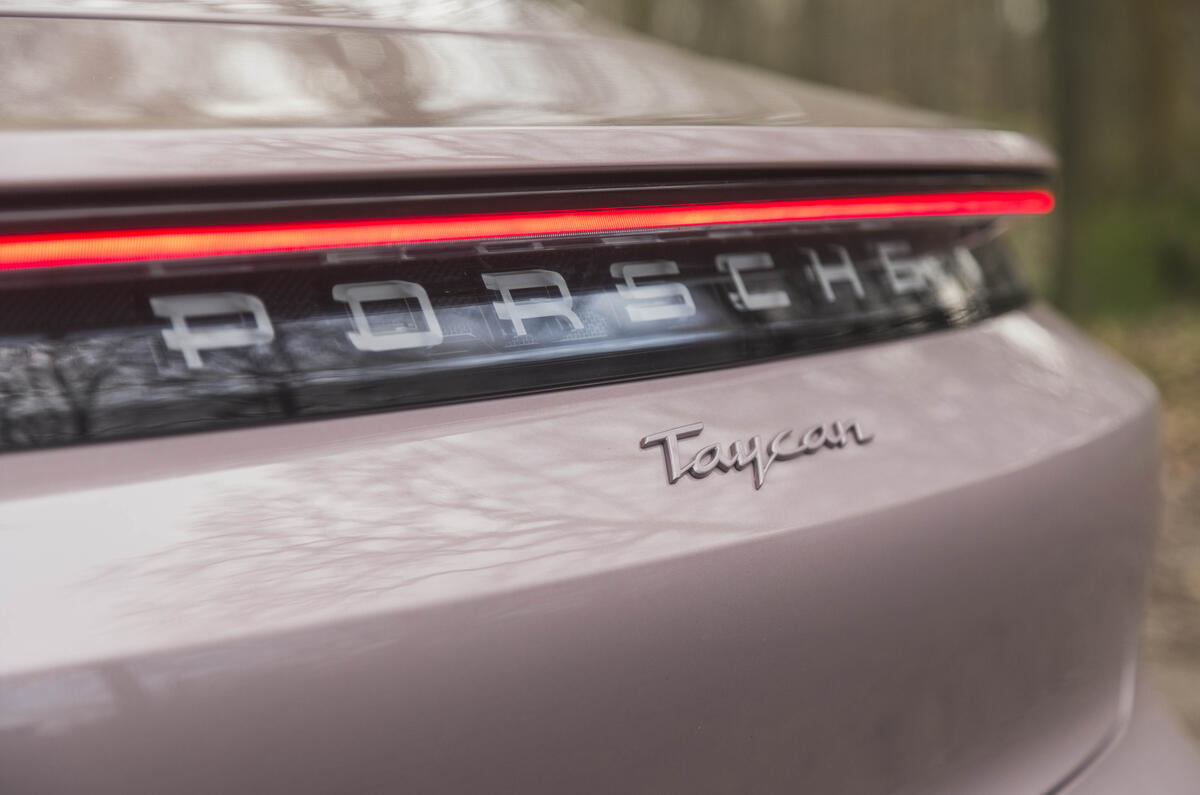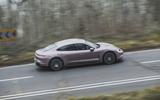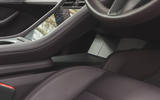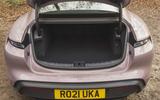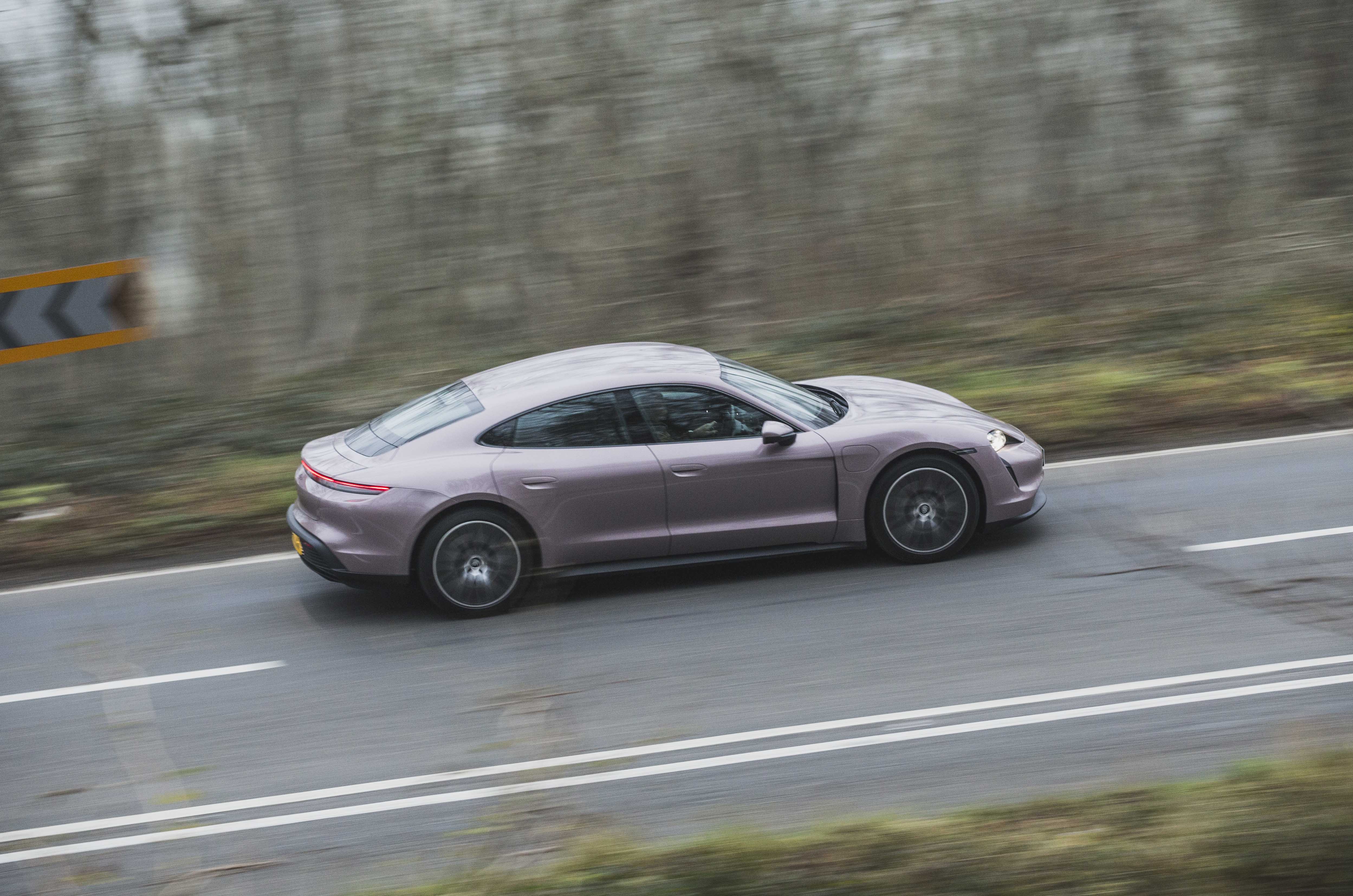The Taycan’s four-door body makes for the sort useful practicality you’d expect of a smallish family car comparable to that of a fairly compact conventional saloon.
In outright terms, it offers slightly less cabin space than a BMW 3 Series, for example, but roughly the same amount of luggage space, with 366 litres available in the boot at the rear and a further 81 litres in the ‘frunk’ under the bonnet. You can store the car’s charging cables under the boot floor near the loading lip, which seems as sensible a place as anywhere, or in the frunk if you prefer; and both the former and the latter can be opened remotely via the car’s key, which is a feature few rival EVs offer.
A two-seater second row of seats comes as standard, with Porsche’s 4+1 cabin layout, with its middle rear seat and extra belt, a £336 option (our test car had it fitted). Those back seats are comfortable for growing children and smaller adults, although limited head room and leg room would make them a squeeze for taller adults, and they’d be likewise tight for three younger kids in booster seats.
The Taycan’s low silhouette and smallish door apertures oblige a fairly low and careful entry to the driver’s seat, but once you’re in you’re made very comfortable, and your view forwards at the road ahead is made particularly clear by a low scuttle. The standard seats don’t offer cushion extension as standard, but they have good lateral support, adjustable cushion height and plenty of lumbar support.
The cabin design and layout is quite sparse and sombre in its style, having much less switchgear and decoration than we’re used to even from Porsche. In places it flirts a little with featureless sterility in its appearance (brighter-coloured leathers and materials than those of our test car are available), but it has plenty of oddment storage and integrates digital technology cleverly for the most part.
The Taycan’s steering wheel is of a modest diameter and, mounted on a widely adjustable column, it sits in front of a curved digital instrument screen. Its rim can obscure parts of that screen, and it also covers the car’s slightly fiddly gear selector: a two-inch toggle small enough that you could almost have mistaken it, 25 years ago, for an air vent control, which sits immediately to the left of the steering wheel, and can be a challenge to find on your first attempt. The black starter button is opposite it, to the right of wheel, and being gloss black plastic on a matching black panel, is made likewise tricky to find.
Rather than being arranged in conventional button consoles, the controls for the car’s headlights, adaptive dampers and stability control system appear as capacitive ‘buttons’ on the perimeter of the instrument binnacle, which don’t give any tactile feedback when ‘pressed’. There are some slightly unintuitive usability quirks of the Taycan’s cabin that need to be negotiated when becoming familiar with the car, then, but none will trouble you for long.
The infotainment system is presented on two touchscreens on the centre stack, the primary upper one bigger, widescreen and landscape-oriented, and the secondary one lower and nearer to your left hand, though smaller and portrait-oriented. The lower one mostly stands in for conventional heating and ventilation controls, but it’s also where you’ll monitor charging progress and set departure timers (battery and cabin pre-conditioning being a distinct efficiency boon for EVs). Its lower portion also gives you a de-facto fingertip input pad if you prefer tracing letters and numbers when programming the navigation to typing them.
Porsche’s voice recognition system is an effective route to the same result, though, and the wider infotainment system is responsive, clearly rendered and easy to use, with particularly good built-in integration of Apple Music streaming for those with matching accounts. For extra cost, you can have an additional 10.9in touchscreen integrated directly ahead of the front passenger for the control of the car’s media system, and also twin 10.1in touchscreens mounted on the headrests for back-seat passengers. Premium audio systems by both Bose and Burmester are offered, although our test car had neither, and the standard system didn’t offend for audio system power or clarity.







